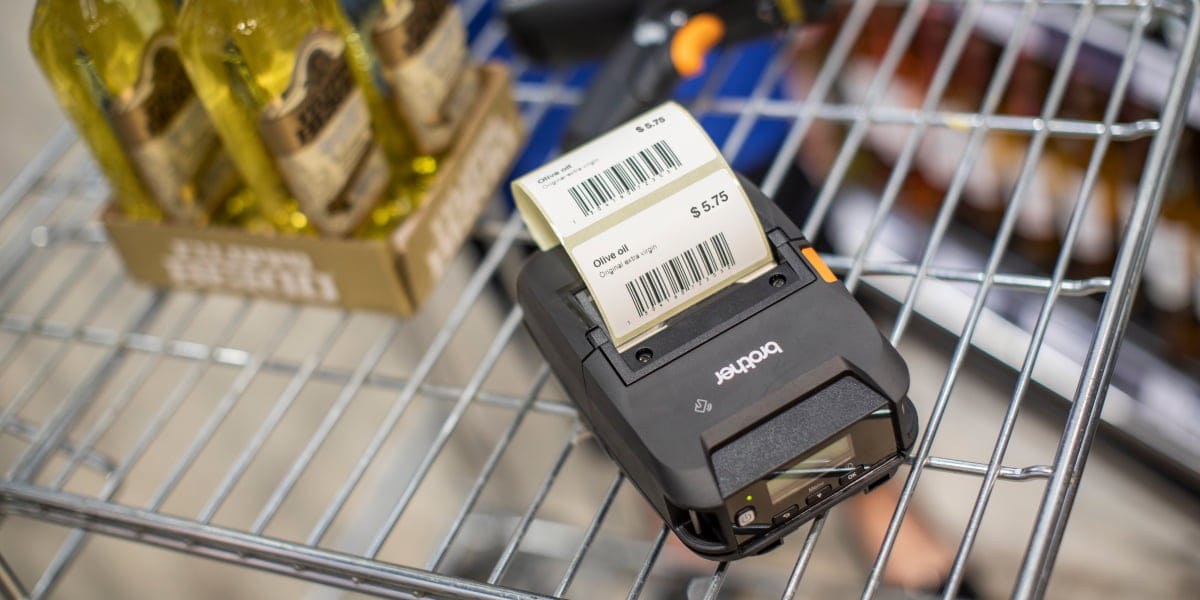
Managing retail inventory with technology

In the age of the internet, the future of retail lies in inhabiting a flexible space between virtual and physical stores.
The growing demand for eCommerce capability, even for established brick-and-mortar stores, requires an almost perfect balance in inventory.
In this shifting retail structure, keeping track of stock and being on top of demand is more vital than ever.
In recent times, businesses have famously been unable to find the correct harmony between overstock and understock.
Back in 2015, Target Canada caused a stir when their inventory mismanagement of Barbie doll toys led to the loss of $2.1 billion and the company's eventual exit from the Canadian region.
After a major mistake in their supply chain where the toys' barcodes did not properly register on Target's computer system, the toys were delivered to warehouses far faster than they were leaving them.
So, how can you keep your retail inventory in check with the latest technology?
In this article, we'll explain what retail inventory management is, how to effectively manage stock, key technologies driving success, and more.
What is retail inventory management?
Inventory management in the retail industry is careful administration of your complete product catalogue to ensure your customers get the products they want. It sounds deceptively simple, but managing a busy stock to align with demand is a challenge that could cost your business.
Good quality inventory management requires processes, people and technology all working in smooth conjunction.
The importance of effective inventory management
Effective retail inventory management is a crucial component of running a successful business. For small to medium-sized businesses, including eCommerce owners, it can determine the difference between profitability and insolvency.
Given the rapid evolution of technology and customer demands, staying on top of inventory management can be daunting. However, by implementing a robust system, businesses can minimise the risk of lost sales, build customer loyalty, and streamline operations.
A must-have tool for retailers
Part of a solid inventory management system is ensuring that each product is properly labelled with correct information like weight, price, expiration dates, and barcodes.
A label printer is a must-have tool for serious retailers looking to keep tabs on their stock.
With the ability to print customised labels on demand, label printers can save time and reduce errors that come from handwritten or pre-printed labels.
Labelling technology can help simplify the process of receiving new products, labelling existing ones, and tracking stock levels, reducing the need for manual entry and increasing the accuracy of inventory tracking.
Read our blog on how eCommerce success is tied to an efficient labelling process
6 examples of retail inventory technologies
Retail inventory technologies have come a long way in recent years, providing businesses with a range of tools to help improve their critical workflows.
From automated systems that manage stock levels and orders, to real-time updates that enable managers to make informed decisions on the fly, these solutions are making a real impact on the retail industry.
Here are six technologies making a real difference to retail operations.
1. Stock Keeping Units (SKUs)
Generally known as SKU, this system combined with a powerful master computer program makes tracking much more accurate. The system gives every product a unique code that is then logged into a master system.
The product can then be identified and tracked as it's scanned in along its journey so that retailers can identify where products are at any time and whether they are available for sale.
2. Barcodes
Barcodes are another tech-enabled way to keep track of individual products through their stock journey. Barcodes are easy to both print and scan, which means that they are a simple and effective way to coordinate movement of stock.
A barcode label printer is an example of a tool that can help retailers create and print unique barcodes, making it easier for staff to manage inventory.
These handy machines provide retailers with the ability to create all kinds of barcodes, including QR codes, efficiently and accurately. Not only this, but barcode label printers also enable replacement labels and tags that have become faded or damaged.
3. Point of Sale (POS)
Computerised point of sale (POS) systems can help you to automatically keep track of how much stock is leaving your outlet and at what rate (i.e. hourly, daily or even yearly).
Such systems can be automatically programmed to send alerts when stock is getting too low and regularly collate inventory sheets which can then be checked to verify product levels.
Having an accurate, and regularly checked, tally of products leaving your outlet can help alert retailers to inventory issues before they become costly.
4. Radio Frequency Identification (RFID)
A recent development in the inventory management industry has come from the use of digital data encoded in small microchips or smart labels attached to products.
These smart labels record data and then transmit it via radio waves to a computer system. This means that instead of scanning individual barcodes to acquire information, data can be collected and entered into a database with minimal human intervention.
Not only does this significantly speed up the process, but it also increases accuracy as it is very unlikely that products will be missed by the system. Whereas human error can leave some products unscanned.
According to the RFID Lab at Auburn University, RFID technology raises inventory accuracy from an average of 63% to 95%, and reduces out-of-stock situations by up to 50%.
5. Cloud and APIs
Enterprises with legacy systems are benefiting from exposing their data through APIs and deploying apps via the cloud in order to take a more flexible approach to managing their extensive inventories.
Sophisticated data sharing capabilities through these technologies can help to create a clearer picture of real-time stock movements from anywhere in the world. This can help with daily management but also by collecting data that will allow for better future predictions and planning decisions.
Fully integrated cloud technology also allows you to link to plug in technologies such as machine learning, big data analytics robotics and smoother RFID.
Check out our guide on how the right label printer can help improve food traceability
6. Agile Labelling
Information is key to keeping track of your inventory, so it’s essential that retail managers and warehouse staff can access the right intelligence when they need it.
Taking advantage of advanced portable printing solutions can make for a smoother, more accurate process. For example, portable wireless printers can deliver fast reliable printing by utilising Wi-Fi, Bluetooth, AirPrint, and MFi.
This allows staff to print vital documents and labels immediately rather than having to move back and forth from printer to product, wasting valuable time and giving rise to more opportunities for error.
How can Brother help retail businesses like yours?
Brother's agile label printing solutions can help your retail business to compete in this ever adapting and fiercely competitive marketplace. To learn more about how we could help you to improve your inventory management, contact our team today.
Contact Us Explore Other Retail Solutions







